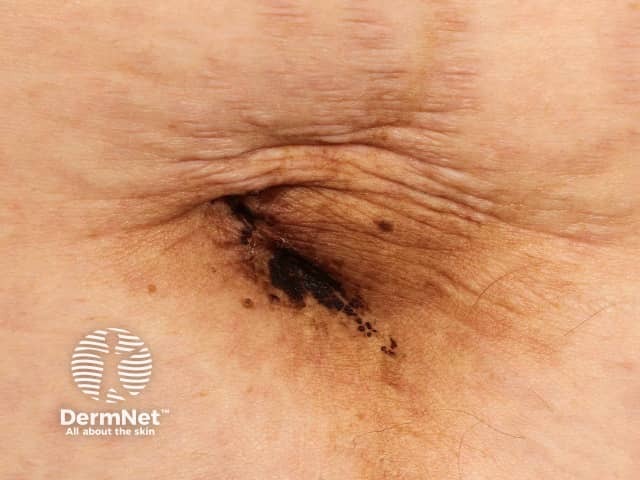Main menu
Common skin conditions

NEWS
Join DermNet PRO
Read more
Quick links
Author: Thomas Stewart, General Practitioner, Sydney, Australia. DermNet New Zealand Editor in Chief: A/Prof Amanda Oakley, Dermatologist, Hamilton, New Zealand. Copy edited by Gus Mitchell and Maria McGivern. November 2017.
Introduction Demographics Causes Clinical features Differential diagnoses Diagnosis Treatment Outcome
Dermatitis neglecta, first described by Poskitt and colleagues in 1995, is a dermatological disorder that results from voluntary or unconscious inadequate frictional cleansing of the skin [1].

Dermatitis neglecta
Dermatitis neglecta has been reported in all ages and skin types, but most commonly occurs in individuals with a physical or mental disability, or sensory disturbance, pain, trauma, or previous surgery in the affected area [2–5]. It is believed to be quite common, although there are only a handful of cases in the literature. This is likely attributable to underreporting and misdiagnosis.
The exact pathogenesis of dermatitis neglecta remains unclear. Inadequate exfoliation of the skin leads to the accumulation of sebum, sweat, keratin, bacteria, and other breakdown products forming a compact crust of dirt [6].
Patients often deny a lack of cleanliness.
Clinical features of dermatitis neglecta include:
Lesions are generally asymptomatic but may be cosmetically bothersome for some patients.
Dermatitis neglecta is mimicked by other localised hyperpigmented skin lesions. The main differential is terra firma-forme dermatosis (Duncan's dirty dermatosis), which is due to a delay in maturation of corneocytes (dead keratin-filled squamous cells in the epidermis) [9]. Other conditions to consider in differential diagnosis include:
Dermatitis neglecta should be suspected clinically with any localised hyperpigmented patch or plaque with a flake-like scale, especially in those with disability.
The patient can be reassured that no harm will be caused by gently scrubbing the skin, even where there is scarring, dysesthesia, or a pacemaker.
Patients should be encouraged to wash their skin at least twice weekly [2,3]. Associated disorders (eg, chronic pain) should be assessed and managed. Dedicated daily light scrubbing with soap and water or isopropyl alcohol may provide effective prophylaxis in high-risk cases [2,3].